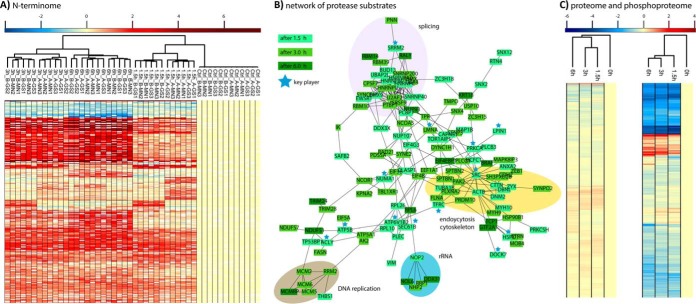Fig. 3.
(A) Temporal profiles of N-terminal peptides regulated upon staurosporine treatment for 0, 1. 5, 3, and 6 h. Log2-fold changes (fc) compared with the 0 h controls are shown across a total of two biological (A, B) and six technical replicates (GS1/2/3, MN1/2/3) per time point. (B) Protein interaction network analysis of regulated protease substrates found at least twofold regulated with a p value <0.05 in both biological replicates. Several key players of cellular homeostasis are cleaved already after 1.5 h. In particular, the splicing machinery, the cytoskeleton, and endocytosis are early targets, whereas DNA replication proteins are cleaved at later stages. (C) Whereas the >5,500 proteins quantified with at least two unique peptides do not show major changes in abundance, most of the ∼5,900 high-confidence phosphopeptides show a significant down-regulation. Interestingly, a group of up-regulated phosphopeptides comprises many proteins of the splicing machinery. Heatmaps were generated using Perseus (18).

